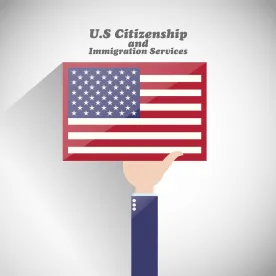The Coronavirus and Its Impact on U.S. Immigration
In last month’s Alert, we provided notice of the Trump administration’s presidential proclamation that indefinitely barred foreign nationals (not U.S. citizens or permanent residents (i.e., green card holders) and their immediate family members) from entering the United States if they had visited China within 14 days prior to their attempted U.S. entry, to curb the spread of the 2019 novel coronavirus in the United States. The ban began on February 2, 2020, at 5 p.m. (EST) and is still in place today.
On February 29, 2020, the Trump administration issued another proclamation to extend that same ban to those foreign nationals attempting to enter the United States if they had visited the Islamic Republic of Iran during the 14-day period preceding their attempted entry into the United States.
Just recently, the Trump administration further expanded that ban to foreign nationals traveling from the Schengen Area. The Schengen Area consists of 26 European countries, including Austria, Belgium, Czech Republic, Denmark, Estonia, Finland, France, Germany, Greece, Hungary, Iceland, Italy, Latvia, Liechtenstein, Lithuania, Luxembourg, Malta, Netherlands, Norway, Poland, Portugal, Slovakia, Slovenia, Spain, Sweden, and Switzerland. The Schengen Area ban will become effective as of March 13, 2020, at 11:59 pm (EDT).
Although not amounting to an indefinite ban, the U.S. Department of State (“DOS”) has provided a Level 3 Travel Advisory for South Korea. Under Level 3, the DOS recommends that all travelers reconsider their plans to travel to South Korea, if possible. As of the date of this Alert, South Korea has not been placed on an indefinite ban, unlike China, Iran, and the Schengen Area.
With the coronavirus spreading, many companies are taking measures to have their employees work from home. However, working from home could negatively affect the status of employees who are under H-1B, H-1B1, and E-3 status. H-1B, H-1B1, and E-3 visa status holders all require certified Labor Condition Applications (“LCAs”) on Form ETA-9035 that are specific to work locations. Whenever such work location changes, the LCA must be posted in two conspicuous areas at the new work location for at least 10 consecutive business days, which excludes weekends and holidays—provided that the work location change, such as working from home, is within normal “commuting distances” from the original LCA work location address. If the LCA work location address is outside such “commuting distances,” then the longest period of time that the H-1B, H-1B1, or E-3 employee can work from his or her home is 10 business days.
If you are uncertain whether an H-1B, H-1B1, or E-3 employee’s work location is within “commuting distance” from his or her home, please contact an Epstein Becker Green attorney to seek confirmation.
Update Regarding USCIS’s New FY 2021 H-1B Cap Electronic Registration Tool
Our last three alerts discussed U.S. Citizenship and Immigration Services’ (“USCIS’s”) rollout and updates regarding the implementation of its H-1B Electronic Registration Tool for the upcoming fiscal year (“FY”) 2021 H-1B cap. Since March 1, 2020, when the new H-1B Electronic Registration Tool was implemented, our office has reported no issues or glitches with the system. However, we have heard cases where the system falsely stated that some attorneys were “not eligible to practice law” when the client received a request to confirm the attorney’s representation. This issue has been reported to USCIS, and the agency is correcting it.
For now, no other issues have been mentioned, and the foregoing schedule remains intact:
-
February 24: Employers may begin creating myUSCIS H-1B registration accounts
-
March 1: Registration period opens
-
March 20: Registration period closes
-
By March 31: USCIS conducts the lottery and electronically notifies selected registrants
-
April 1: Filing period begins for selected cases ONLY within a 90-day filing period
Reminder of USCIS’s Rollout of the New Form l-9
USCIS has updated its Forms I-9 to the 10/21/19 edition date. All employers are required to start using this version no later than May 1, 2020. For now, employers may use either the previous edition, dated 07/17/17, or the new 10/21/19 version to verify new hires or re-verify current employees requiring employment re-verification.
USCIS Incorporates New Forms That Implement the Trump Administration’s Public Charge Requirements
Since the U.S. Supreme Court ruled in favor of the Trump administration’s rule changes to the public charge requirements, all U.S. immigration forms filed with either USCIS or the DOS require more in-depth documentation evidencing that no foreign national will be a public charge in the United States. This includes companies sponsoring employees for such employment-based visas as H-1B, TN, L-1, E-3, and O-1, as well as permanent residency employment-based I-485 applications for adjustment of status. If processing with USCIS, the agency will take a totality view to determine if any foreign national has or will likely be a public charge. For employment-based I-485 applications, USCIS has added the new Form I-944, which requests specific information regarding the employee’s prior filed taxes, health insurance maintenance, and credit report, and if any local, state, or federal benefits were ever incurred. As we continue to prepare USCIS forms with the public charge notification requirements, we will discuss in future Alerts the effect of this rule change.





 />i
/>i
